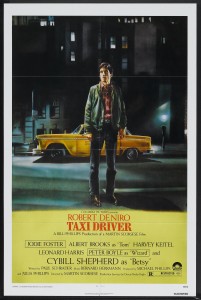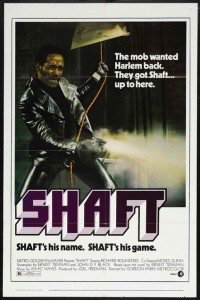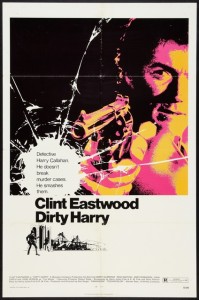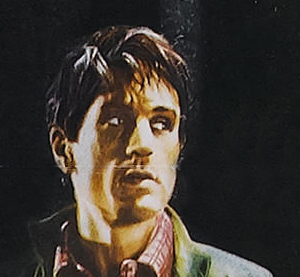 These films utilized many of the same filmmaking styles used on the “film-noirs” of the 40’s and 50’s. These films focused on the story and many of the characters had a cynicism and distrust of the system, the government and life in general, a feeling many Americans had after the turbulent period in the late sixties and seventies. Like the noir style, the filmmakers shot these films in an almost documentary style, telling the story from a neutral point of view. Much like the mood of the country after World War II, the main characters of these films are outside the system, disenfranchised loners, struggling to find their place in a world that has nothing to offer them. Films that emerged during and in the immediate after-math of Vietnam and smack in the middle of the recession of the 70’s were often doom-laden. Despite being major Hollywood productions, these films didn’t force a moral code on the audience but rather let the viewer ponder their own morality.
These films utilized many of the same filmmaking styles used on the “film-noirs” of the 40’s and 50’s. These films focused on the story and many of the characters had a cynicism and distrust of the system, the government and life in general, a feeling many Americans had after the turbulent period in the late sixties and seventies. Like the noir style, the filmmakers shot these films in an almost documentary style, telling the story from a neutral point of view. Much like the mood of the country after World War II, the main characters of these films are outside the system, disenfranchised loners, struggling to find their place in a world that has nothing to offer them. Films that emerged during and in the immediate after-math of Vietnam and smack in the middle of the recession of the 70’s were often doom-laden. Despite being major Hollywood productions, these films didn’t force a moral code on the audience but rather let the viewer ponder their own morality.The one sheet for this poster features the artwork of Guy Pellaert, who was able to capture the isolation of Robert DeNiro’s “Taxi Driver” character Travis Bickle as his mind slowly descends into a murderous rage. Like the quintessential noir, Travis’ objects of his desire are the angelic blondes who reject him but for whom he is ultimately able to cast his feelings aside, or so we think.
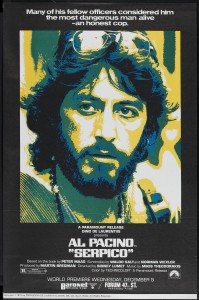 Another film set in New York City is Sidney Lumet’s 1974 classic cop drama “Serpico” which stars Al Pacino. Serpico took a different perspective, one based on the true story of Frank Serpico, a New York City cop who refuses to take bribes and kick-backs, which was running rampant from the cop on the beat to the men in charge. In taking the moral stand, like most characters found in noir, Serpico puts himself outside the system, a system that he has devoted his life to defend and which wants to see him removed by whatever means possible.
Another film set in New York City is Sidney Lumet’s 1974 classic cop drama “Serpico” which stars Al Pacino. Serpico took a different perspective, one based on the true story of Frank Serpico, a New York City cop who refuses to take bribes and kick-backs, which was running rampant from the cop on the beat to the men in charge. In taking the moral stand, like most characters found in noir, Serpico puts himself outside the system, a system that he has devoted his life to defend and which wants to see him removed by whatever means possible.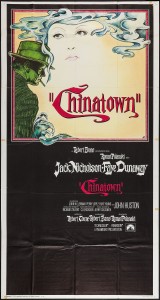 There were many period pieces produced during the 70’s but none more cynical than “Chinatown”. This dark crime thriller, often referred to as a Neo-Noir, was directed by Roman Polanski and stars Jack Nicholson and Faye Dunaway. While set in 1930’s Los Angeles, it embodies much of the disenchantment Americans felt in the seventies. With a desperate and doomed cloud that looms over every character, the viewer is hard pressed to find anything redeeming about the characters including its star Jack Nicholson whose motives are often egotistical and self-serving.
There were many period pieces produced during the 70’s but none more cynical than “Chinatown”. This dark crime thriller, often referred to as a Neo-Noir, was directed by Roman Polanski and stars Jack Nicholson and Faye Dunaway. While set in 1930’s Los Angeles, it embodies much of the disenchantment Americans felt in the seventies. With a desperate and doomed cloud that looms over every character, the viewer is hard pressed to find anything redeeming about the characters including its star Jack Nicholson whose motives are often egotistical and self-serving.Shaft (1971)
Director Gordon Parks delivered with his noir- tinged “Shaft” starring Richard Rountree, a private detective who travels between Harlem and little Italy to find the missing daughter of a mobster while dodging a New York City police chief’s request for information.
Dirty Harry (1971)
Filmed on location in in San Francisco, director Don Siegel’s classic “Dirty Harry” which stars Clint Eastwood had some many catchy one-liners that the film has entered into our collective lexicon. The film was one of the highest grossing films of 1971 and launched four sequels.
Mean Streets (1973)
“Mean Streets” is the 1973 crime drama written and directed by Martin Scorsese and stars Harvey Keitel and Robert De Niro. De Niro won the ‘National Society of Film Critics’ award for Best Supporting Actor for his role as John “Johnny Boy” Civello.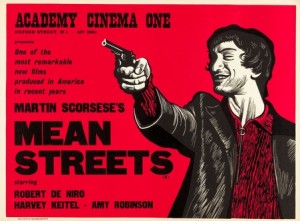
This poster is the British Quad and is an extremely rare. This coveted poster was created by artist Peter Strausfeld for the Academy Cinema in Oxford Street, London and is among the rarest of Strausfeld’s work for the Academy Cinema.
Sign-up for our newsletter and get news, updates and special offers
For lovers of Vintage Posters, Photography and Art — Limited Runs!
Limited Runs, the premier destination for discovering and buying the best in original vintage posters, print art and fine art photography, continues to add new items to the site every day and each week we feature some of our latest additions of original vintage film, advertising and rock posters, art prints and photography.
Also follow Limited Runs on:

